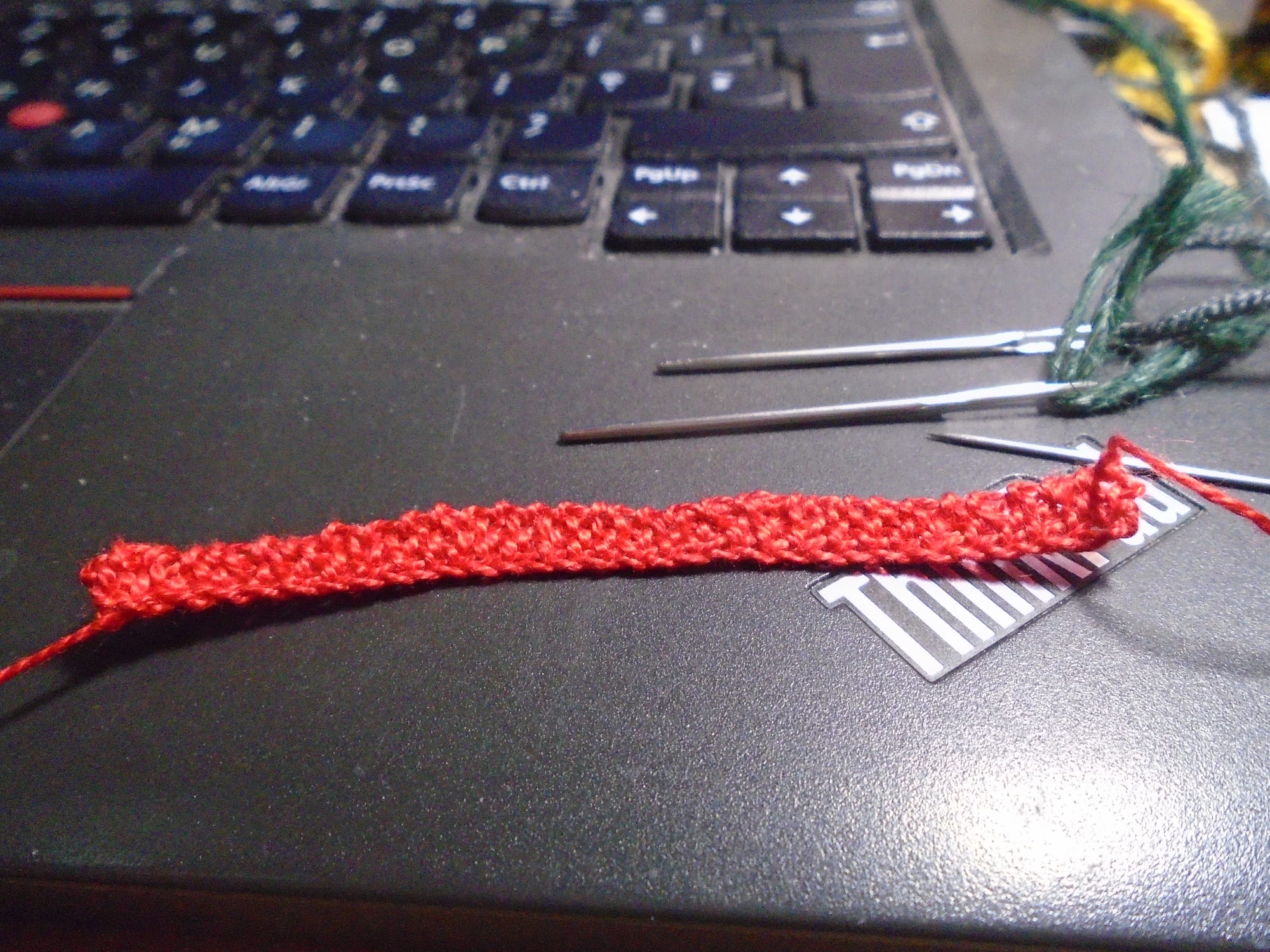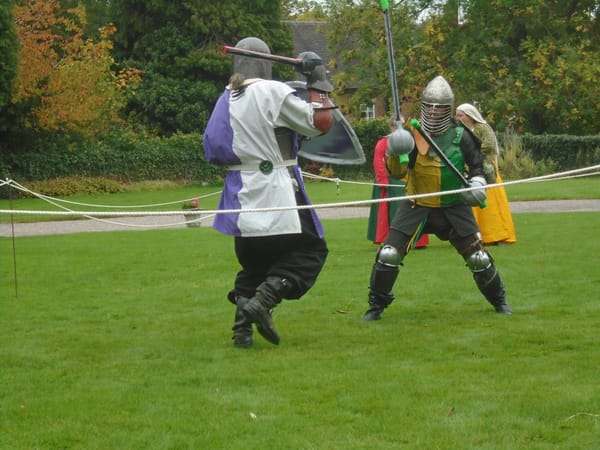Stitching in the air

I had never heard of Puncetto Valsesiano till yesterday; which is perhaps not surprising. I know a fair bit about needle lace in general, but there is such a huge variety of needle laces that it would be difficult, if not impossible, to know about them all. And the first thing I heard about it was someone in the help channel on the sewing/crafts Discord server who wanted to know how to start it off without the use of a piece of fabric (it is often used as a fabric edging).
So I replied that I hadn't come across this particular type of lace, but most needle laces work in the same way: you couch the main outline threads onto a piece of card for support, then you work your lace filling stitches, and then when the piece is finished you very carefully remove your couching stitches. No fabric required.
Ah, but no. This one is different. You don't need a piece of card to do Puncetto Valsesiano. First of all, let's look at the technique itself, which is covered here. This tutorial shows it worked as an edging, but doesn't tell you how to work it on its own without the fabric; as you can see, there is only one stitch, which is effectively a blanket stitch. (The tutorial also doesn't tell you how to do the lace effects; I imagine you just oversew the edge where you want to leave a hole, but it is not entirely obvious to me how you rejoin, for instance. I'm making further enquiries about that.) But the basic stitch is extremely simple.
Rather ironically, the person asking for help with this was doing so because she had a large number of filet lace patterns, but she wasn't confident about making the requisite netting for filet lace, and she also thought many of them would turn out too large if she used filet crochet instead (which is the standard alternative - indeed, filet crochet was specifically invented as a quick substitute for filet lace). So she thought she could possibly try interpreting them using Puncetto Valsesiano instead, and that would work better. I think she's on to something; it clearly would work for that, and I think it would work very well. Nonetheless, I also encouraged her to learn to net, since that is just as easy in itself. The challenge with netting is not the technique itself, but achieving a fine enough gauge to use for filet; I have absolutely no idea how they did that in the Middle Ages, given what the netting needles were like at the time, but clearly they did, since filet was extremely popular. It is certainly a lot easier with a slim modern steel needle.
I was intrigued enough to take a trip down the rabbit hole, which led me to the tutorial I've linked above; so I got out a ball of number 8 pearl cotton and my regular cross stitch needle (which, to be honest, these days is mostly used for unblocking two-hole beads which have one hole blocked by the surface coating, which happens just often enough to be a bit of a nuisance), and I started playing around. And as soon as I had the needle and thread in my hands, the solution hit me. You make what is effectively a crochet chain for your foundation, but you do it with the needle - you just use the needle to pull each loop through the previous one, and then you tighten it to the point where there are no obvious holes, but not so tight that the thread is squeezed. I did that, worked four rows of Puncetto Valsesiano on top of it, and this is what I ended up with:

So the crochet-style chain thing works very nicely, and my instinct on how tightly to pull it was pretty much spot on; it bends a little, so I should have done it just a smidgin looser, but no more than that. As you see here, I can get it to lie pretty flat.
I do plan to learn to do the actual lace; but it also occurs to me that I now have something else very useful. There is no reason at all why this can't be done in the round, and, in fact, it's probably easier if you do (because then you don't have to keep making extra stitches at the ends to keep the edges straight). So if I need a tubular braid for any reason, and especially if I need to make that braid around something like a bag handle, this is going to work very well. The strength and density are comparable to those of a woven fabric, and it has a little bit of widthways give - not really enough to be classed as a proper stretch, but enough for it to exert a gentle grip on anything it's made around. You could, for instance, put it on bike handlebars; or, for that matter, the tiller of my mobility scooter, which is covered in foam as these things generally tend to be, but the foam is starting to show some signs of wear. For that sort of thing, obviously, I wouldn't be using number 8 pearl cotton. Aran-weight knitting yarn seems like a much better idea (being so much quicker, it would not be a vast hassle to make two pairs to ensure they could be washed regularly). Yes, you can knit things like that, but this technique is going to be a lot harder-wearing.
As for finding out how to go from "oh, look, you can make a fabric out of blanket stitches, that has its uses" to "yay, proper lace!" - I'm asking in the SCA. Because there is pretty much bound to be someone, somewhere, within the SCA who is not only already an expert, but also falling over themselves to teach other people. It is part of the great joy of the SCA. There is a huge amount of knowledge kicking about and it gets shared liberally in all directions; within a month of rejoining I'd already significantly extended my already very wide vocabulary!
In which case I may very well also use it for some of my filet lace patterns if I need a finer gauge than I can reasonably make net for. It's always helpful to have a few extra strings for my bow.
On which note, the SCA also does seated archery... I'll let you know!




